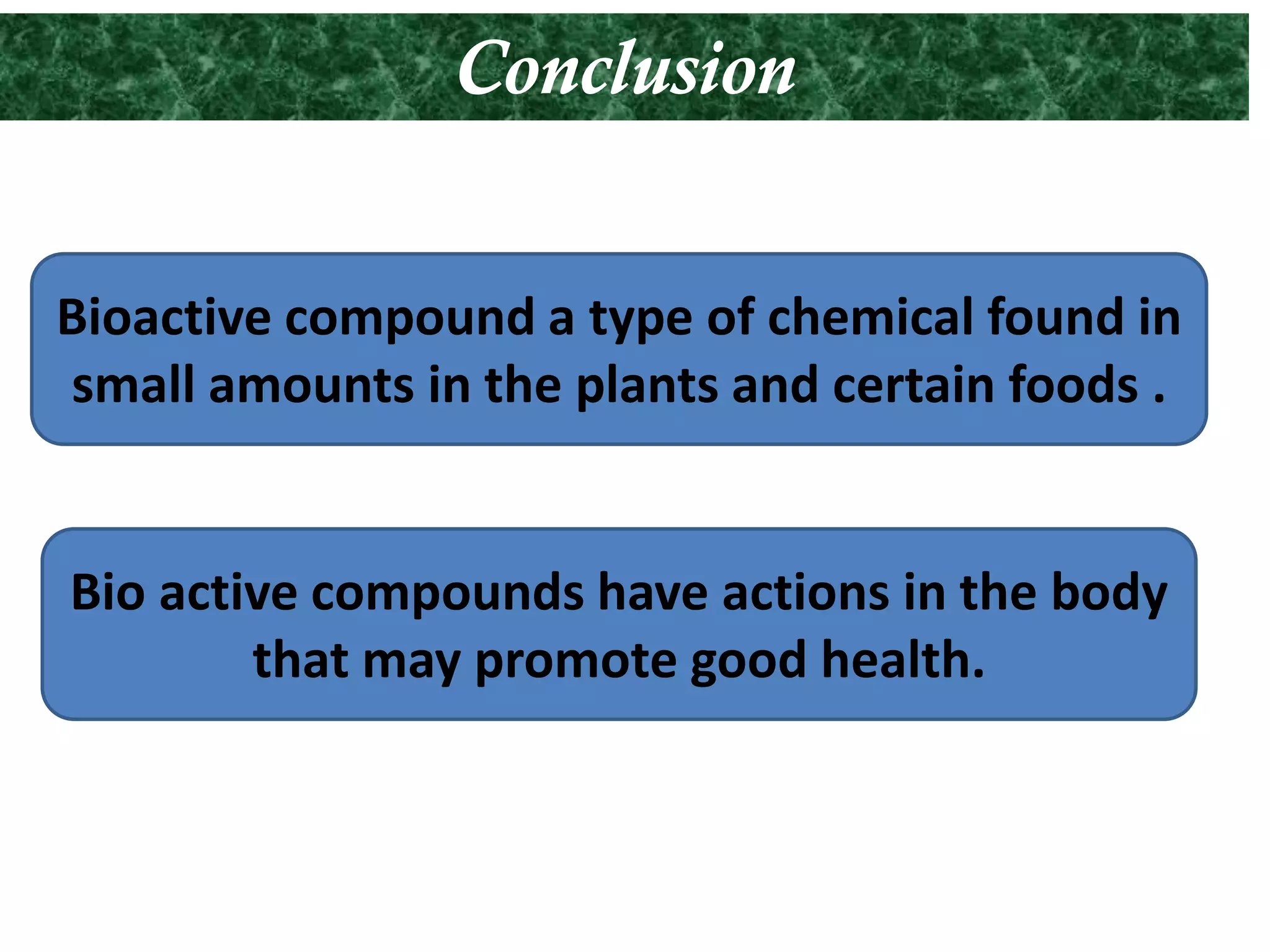The document discusses various bioactive compounds found in fruits and vegetables, including carotenoids, polyphenols, vitamins, and anthocyanins. It provides details on specific compounds like beta-carotene, lycopene, lutein, and zeaxanthin, and explains their health benefits. These compounds are said to be responsible for the colors of fruits and vegetables and may help prevent diseases. The document also discusses vitamins A, D, E, K, C, and B12, and their roles and food sources.


























